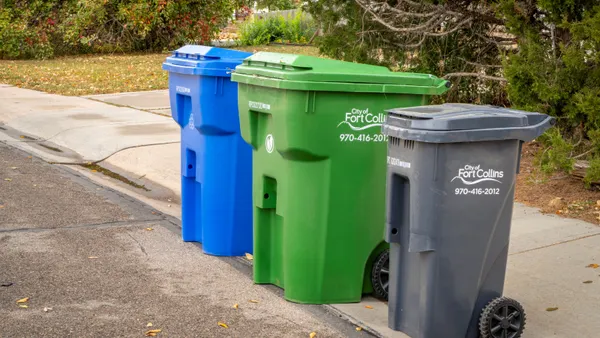Dive Brief:
- According to a new report from the American Chemistry Council (ACC), plastic film recycling grew by 3% to at least 1.2 billion pounds in 2015 and domestic recycling activity increased, as reported by Plastics News.
- Based on analysis by Moore Recycling Associates, clear polyethylene film comprised more than half of the material collected. Post-consumer bags and wrap accounted for about 125 million pounds of the material collected.
- The report estimates that the U.S. had approximately 870 million pounds of reclamation capacity in 2015. Composite lumber manufacturers and the film and sheet market made up the majority of buyers for this material.
Dive Insight:
This report marked the 11th consecutive increase in annual film recycling, though many respondents reported challenging market conditions in 2015 due to low prices for virgin resin. An increased amount of material coming into material recovery facilities was part of that growth, though those numbers are still a fraction of the overall 1.2 billion pound figure and many MRFs have reported having trouble finding buyers even when they do separate the material into bales.
The report sees this increase in MRF activity as a sign that consumer drop-off programs, which can be beneficial because they collect cleaner material, have yet to fully take off. While the ACC's Wrap Action Recycling Program has been active in multiple states, making this a nationwide habit could require "widespread outreach and education along with incentives for consumers with a lower motivation to recycle." Drop-off programs are often touted as a sign that plastic film, particularly bags, can be easily recycled.
Despite these current market factors, companies are still seeing opportunities in the plastic film recycling field. Avanagard Innovative LP recently announced plans for a $10 million plant to create recyclable LDPE pellets at its existing Houston facility. Additional investments in both processing and end-market uses may be needed to help make material that may come from increased consumer engagement more valuable in the future.









